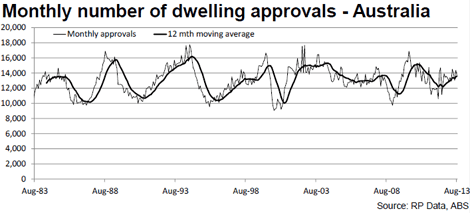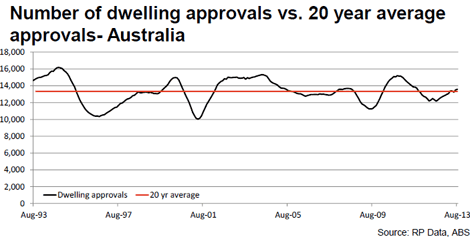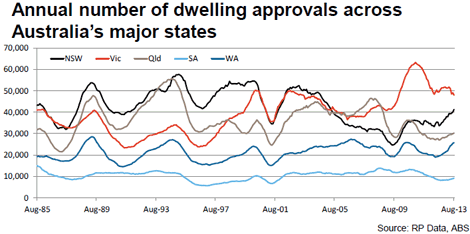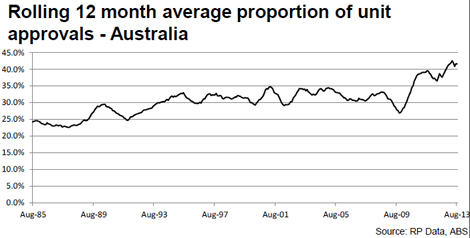Low interest rates push construction approvals higher than long-term average: Cameron Kusher
Recent national dwelling approvals data by the Australian Bureau of Statistics shows that with interest rates at their lowest levels in 53 years, dwelling construction approvals are now higher than their long-term average levels.
This latest news will please the RBA where Governor Glenn Stevens recently stated that with interest rates at extremely low levels, dwelling construction is starting to fill the void.
The RBA was keen to see an increase in dwelling construction, not just higher home prices. Governor Stevens also commented that the RBA was hopeful that dwelling construction could pick up some of the economic void as mining investment went past its peak. The good news for the RBA is that what they desired is exactly what is coming to fruition.

Lower interest rates and incentives to ‘buy new’ are fuelling a higher number of dwelling approvals, which ultimately leads to construction which in turn provides a substantial multiplier effect for the domestic economy.
Based on the ABS results, the best response to the lower interest rate environment in terms of dwelling approvals was seen within New South Wales, Queensland, South Australia and Western Australia.
While approvals in Victoria trended lower, the number of approvals across the state was significantly higher in previous times than those in other states and has recently recorded a significant decline.

This result is not necessarily a bad thing given the fact that the housing supply deficiency is lower in Victoria and there have been looming concerns about excessive levels of construction within inner Melbourne and across the outer fringe of the Melbourne metro area.
Across the states there have been early signs of a revival in dwelling approvals. The annual number of dwelling approvals as at August 2013 was 22.6% higher in New South Wales, -3.0% lower in Victoria, 12.2% higher in Queensland, 9.6% higher in South Australia and 31.8% higher in Western Australia.
With month-to-month dwelling approvals data so volatile, it’s important to look at the trend where based on today’s accompanying charts, it can be seen that approvals are beginning to trend higher.
Based on a rolling 12 months average figure, there were 13,589 approvals in August 2013 which was 11.7% higher than in August 2012. The August 2013 approvals figure of 12,163 was the most recent low.

The RP Data-Rismark September Home Value Index confirmed that capital city home values have increased by 8.7% from their recent low. Given this and based on percentages, the rebound in approvals was stronger than the lift in home values.
A lift in dwelling approvals is more important than a lift in home values. It would be fair to say a higher rate of dwelling approvals is much more beneficial to the Australian economy than a lift in home values. Unfortunately without the additional demand created through higher home values and sales it is less likely that developers would take on the risk of building more homes.
The rolling 12 months average dwelling approvals figure shows that approvals are now 1.9% above their 20 year average. The issue here is that for most of the past 20 years, the supply of new dwellings has been insufficient. This result is probably not actually a good benchmark; no doubt the RBA would like to see approvals continue to climb further from this point.

The ABS dwelling approvals data is the sharp rise in the proportion of approvals for medium and high density housing. He found that over the past 12 months, 41.6% of all approvals were for units where just five years ago, only 33.2% of all approvals were for medium and high density properties.
The shift towards a higher proportion of unit approvals is a change that may be difficult to accept for potential home owners but will no doubt be an ongoing feature of the market over coming years.
As long as governments continue to show a reluctance to expand urban footprints, particularly within our major capital cities coupled with population increases in these areas, there will subsequently be additional demand for housing.
It is clear that instead of supplying a greater number of detached homes there is a general preference, particularly in some of our larger cities, for densification of inner city areas. This is not necessarily a bad thing, especially considering that this development of inner city areas will reduce the requirement for new infrastructure.
Cameron Kusher is senior research analyst at RP Data.